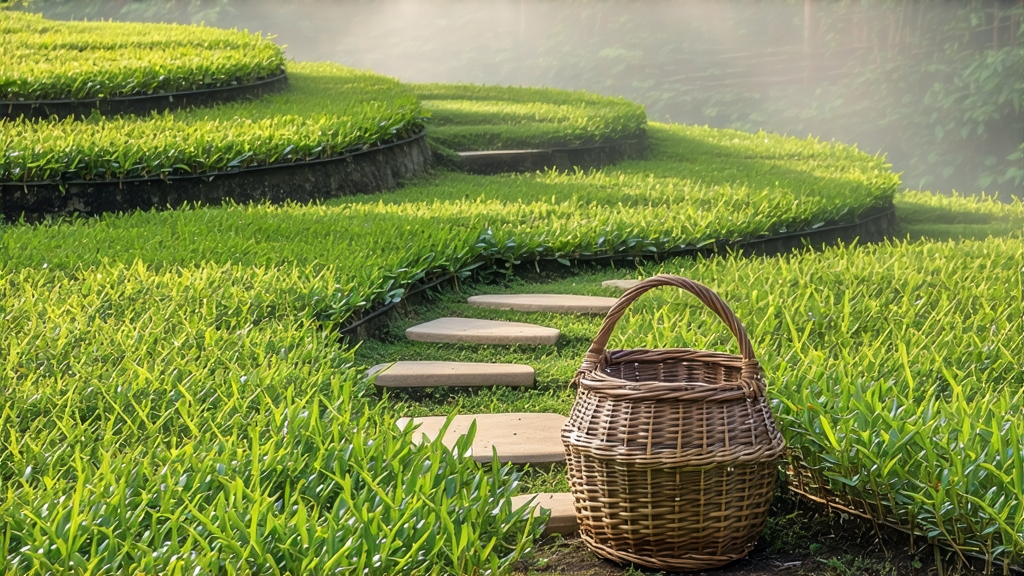
High among the perennially mist-crowned ridges of Mt. Mengding in Sichuan Province, a tea once reserved for emperors still unfurls its down-covered buds every early April. Locals call it Meng Ding Huang Ya—“the yellow bud of Mengding”—and for more than twelve centuries it has embodied the most discreet yet regal branch of China’s six major tea families. While green tea grabs the spotlight and pu-erh courts collectors, yellow tea sits in a quiet niche, prized for a mellow sweetness that tastes like mountain air translated into liquid silk. Of the handful of yellow teas that survive today, Meng Ding Huang Ya is the oldest recorded, the most difficult to produce, and the one whose cup best balances floral lift with cream-toned depth. To understand it is to witness a living fossil of Chinese tea craftsmanship, a process so labor-intensive that only a few hundred kilograms reach the market each year, most snapped up by connoisseurs in Chengdu and Beijing before the rest of the world learns it exists.
Historical scrolls kept in the monastery at the summit of Mt. Mengding credit the Buddhist monk Wu Li-zhen with planting the first seven tea bushes in 53 BCE. By the Tang dynasty (618-907) those bushes, still alive today and fenced off as “ancestor plants,” were yielding buds that traveled 1,500 km north to Chang-an as tribute. An edict of 724 CE specifically requested “the yellow shoot picked before the Qingming festival,” marking one of the earliest government documents to fix a harvest date for a named tea. Song-era poet Lu You celebrated its “golden soup and snow-white down,” while Ming dynasty tea inspector Xu Ci warned that counterfeit versions “smell of green but lack the hidden honey,” an early acknowledgment that the yellowing step is what separates genuine Huang Ya from mere green tea pretenders. After a brief eclipse during the early Qing when compressed tribute cakes fell out of fashion, the technique was revived in the 1970s by provincial tea scientists who traced elderly artisans in Ya’an county and reconstructed the exact piling ratio, humidity, and hand temperature required. In 2008 Meng Ding Huang Ya was granted China’s GI (Geographical Indication) status, legally restricting the name to buds plucked within the 13.2 km² micro-basin whose altitude ranges from 800 m to 1,450 m and whose annual fog days exceed 220, climatic conditions that slow photosynthesis and concentrate amino acids.
The cultivar itself is a local variant of Camellia sinensis var. sinensis known to villagers as “xiao ye zhong,” small-leaf type. Its dormant winter buds accumulate theanine thanks to sharp diurnal temperature swings; by early spring each bud weighs 0.12–0.15 g, tapers like a spear head, and is veiled in so much silvery pubescence that a handful looks like powdered moonlight. Only the standard “one bud, one unfolded leaf” pluck is accepted for top grade; anything larger fails to develop the signature “yellow leaf, yellow liquor” during processing. Picking begins at dawn when mountain humidity hovers near 85 %, keeping the plucked cells turgid and preventing premature oxidation during the downhill walk. A seasoned picker can gather just 600 g of fresh material per hour, meaning that twenty man-hours of bending among cloud-soaked bushes are needed for the single kilogram of finished tea ultimately retailed at boutique prices.
Crafting Meng Ding Huang Ya is a four-day choreography of heat, moisture, and stillness collectively called “sealed yellowing” (men huang). The first step looks familiar to green-tea makers: sha qing, or kill-green, done in woks heated to 140 °C. Yet here the tea master fries for only 70–90 seconds, enough to denature polyphenol oxidase but deliberately leaving 8–10 % residual moisture, higher than the 5 % typical of Longjing. The higher moisture is the substrate on which the next, unique phase depends. While the leaves are still warm, workers wrap them in stacks of thin hand-woven Huang bamboo paper, creating 2 kg “pillows” that are slid into a pine-wood cabinet maintained at 28 °C and 75 % relative humidity. For the next 24 hours the pile ferments in a micro-aerobic state: not the full microbial assault of black tea, but a slow enzymatic browning that converts chlorophyll into pheophytin